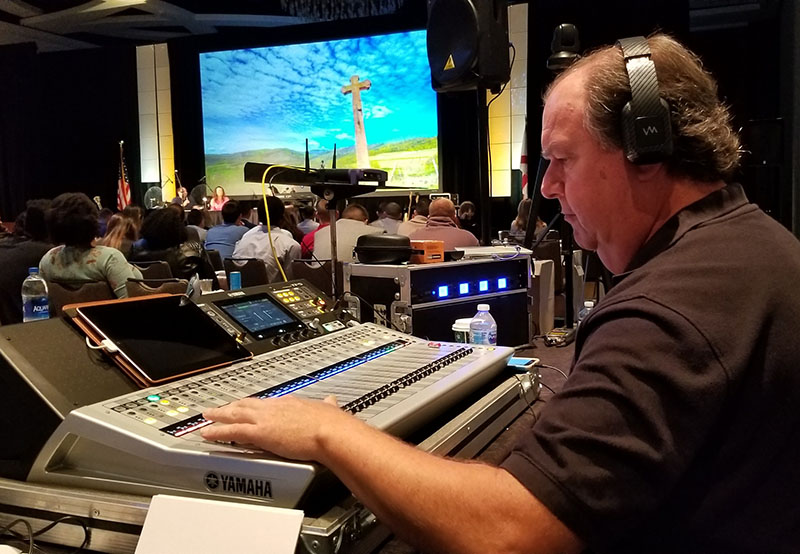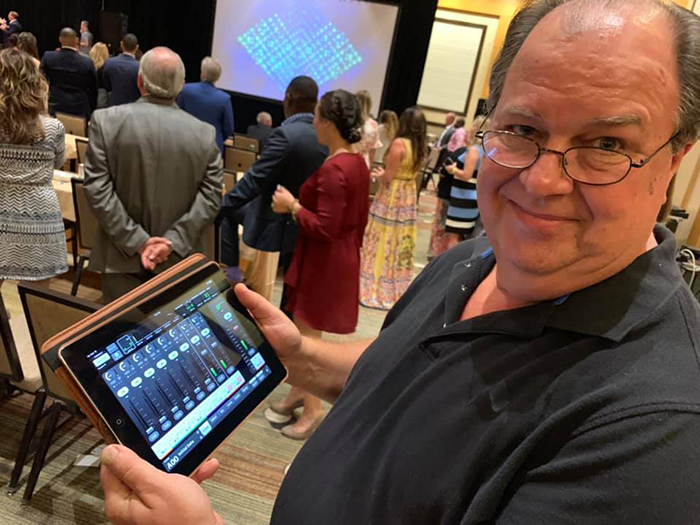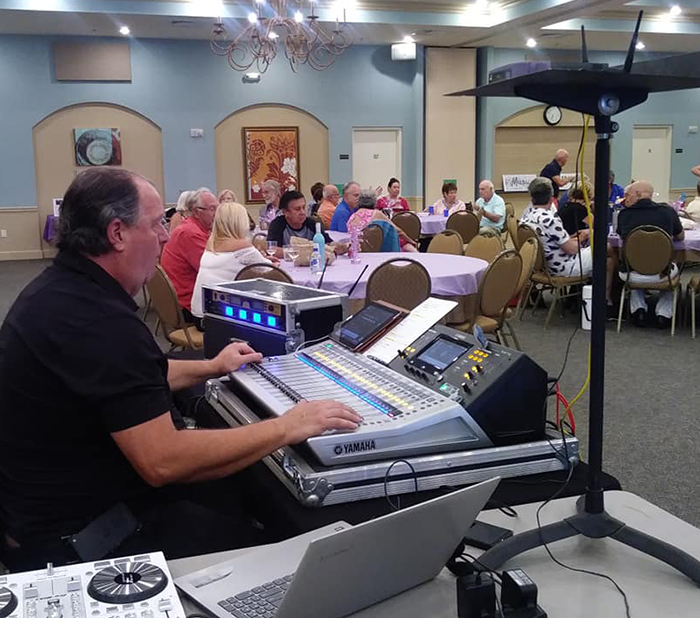
The Usual Suspects
If I’m the A1 or A2 on the gig, I’m introduced to the producer and/or the TD and/or the client, depending on the size of the event. This also includes an introduction to the gear that we’ll be working with. You’re probably thinking, “What the? You don’t know what equipment you’re working with until you get on site? Are you kidding?”
For me, that’s normal. And even if by some miracle I do get advance information about the gear, it inevitably turns out to be something completely different when I arrive on site. But these gigs are usually a smaller meeting with just a mixer, some wireless microphones, some point source loudspeakers on stands, and maybe a couple of subs.
For larger general sessions, I’m normally an audio technician working with an A1 who designed the system specifically for that gig, as well as the A2. They’re usually pleasantly surprised and grateful when upon discovering that I’ve already reviewed the plots, know how to attach the specific line arrays to the top frame and set the angles, know the difference between NL4, NL8, and XLR cables, and further, that I’ve actually brought tools with me. (See “What’s In The Bag?” on ProSoundWeb.)
It doesn’t take them long to figure out that they can tell me and my comrades what they want done and then go about their business. They know we’ll ask if we need anything, such as the angles or connection configuration on the arrays, cable paths, etc.
On a recent large-ish gig with two main stacks and two delay stacks (with the requisite subs, front fills, side fills, and foldbacks), I was given the task of placing six active loudspeakers on stands in the pre-function area – literally hundreds of feet of NL4 cable, up and over doors, along walls, and so on, with one Y connection involved. Walking the area with the A1, who I’ve worked with on several occasions, to determine the best loudspeaker placement, he turned to me and said, “You know what to do,” and returned to FOH.

Every cable was labeled at both ends, so it was easy for the A2 to make the connections in audio world when I was done. The other techs and hands, many of who I work with frequently, were doing similar tasks, and it was like a well-choreographed ballet. Everything was up and running by the end of the day. Business as usual.
Showing The Way
On rare occasions, I find myself working with a newbie, quickly recognized as such when coiling cables without using over/under. This presents some choices. I can either A) let the person continue working uninterrupted, or B) offer to show the proper method for coiling cables (“Stagehand 101”). I always choose “B,” which leads to another choice. I can follow up by saying either A) “Hey, you’re doing it wrong,” or B) “Would you like for me to show you a better way so you won’t have to fight with the cable?
Choosing “A” means the conversation has ended before it even started, because no matter how much I talk after that point, I won’t be communicating. So “B” is by far the more tactful and diplomatic approach, and the response is usually, “Sure!”
I’ve found over the years that folks just starting out are usually grateful when someone is willing to share knowledge. Experience is indeed the best teacher – as long as it’s someone else’s experience. I explain that I’ve been on shows where someone got fired on the spot for coiling cables without using the over/under method, not so much because they were doing it wrong but because the client wanted experienced hands and wasn’t getting what they were paying for.

I then take a few brief moments to teach how to properly coil cables and give a quick demonstration of the benefits. At this point, I’ve made a new friend, but more importantly, the gig will go more smoothly because no one will be wrestling with a stubborn cable. Plus, the newbie is receptive to other things I may teach as well.
I’ve been on the receiving end of “experience” as well. Some of my comrades, who are at least as experienced as I, won’t hesitate to jerk my chain when, for example, I’m not paying attention as I walk under an unsecured truss frame that’s being lifted off the ground into position by a pair of forklifts in the parking lot at the Daytona Motor Speedway. (Hey, these moments happen.) Still, I appreciate having friends and colleagues who have my back like that.
I’m currently 61 years young with over three decades in this racket, and have seen people come and go, some of whom I miss, others whom I never will. I hope to be able to stay in it for another 10 years or so.
Being a local means I can be in my own bed every night next to my wife of 34 years, and I can usually make it to my favorite freshwater fishing spot in a nearby forest at least once a week. Anyone who wants the touring life can have it, as far as I’m concerned. More power to you, and I wish you every success.
